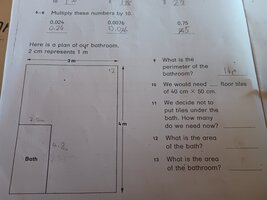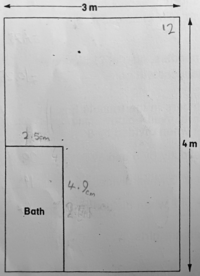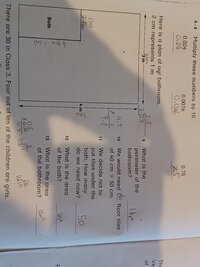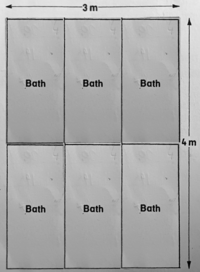LiseyDot05
New member
- Joined
- May 3, 2023
- Messages
- 35
Hi again, everyone. Me back looking for help with a maths homework problem. ?
The bath area measures 2.5cm by 4.9cm. We have measured both sides numerous times, with various rulers & that one particular side is still coming up at 4.9cm.
My son is looking for a wee bit of guidance through this one if possible, please.
The bath area measures 2.5cm by 4.9cm. We have measured both sides numerous times, with various rulers & that one particular side is still coming up at 4.9cm.
My son is looking for a wee bit of guidance through this one if possible, please.




